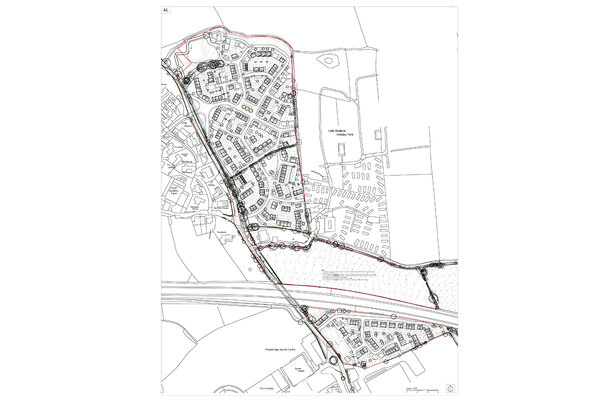You are viewing 1 of your 1 free articles
A wider reform of the planning system is needed
Following the publication of the Raynsford Review of Planning’s initial findings, Matthew Bailes outlines what he sees as the major challenges facing the system
It seems to me that our planning system has at least four fundamental challenges to deal with.
First of all, there is the acute shortage of housing, particularly in the southern half of the country, which is now having a serious negative effect on the life chances of younger generations.
This needs to be addressed as quickly as possible, and with the kind of focus and energy we showed in tackling the post-war housing crisis.
In doing so, we need to learn the lessons from the post-war era, to ensure we are building high-quality homes and places that will be desirable not just now, but in decades to come.
“These challenges point to a need to re-imagine and change existing places, as well as creating well-designed new settlements.”
Second, some areas, particularly in the northern half of the country, need substantial regeneration and a new economic future. This problem may get more acute after Brexit.
Third, the internet has and will to continue to have a profound effect on how we shop, work and spend our leisure time, which will in turn have major implications for some places.
In particular, the traditional high street, as we know it, will not survive in its current form. The demand for out-of-town shopping destinations will also diminish, potentially quite rapidly.
Fourth, the combination of the obesity crisis, major concerns over air pollution, and chronic, growing congestion all point to strategies to encourage people to walk, cycle or use public transport – rather than drive – when possible.
Taken together, these challenges point to a need to re-imagine and change existing places, as well as creating well-designed new settlements.
So, how well is our existing planning system set up to deal with these demands?
According to Nick Raynsford’s recent report on the planning system, the answer is depressingly clear.
He sees a wide variety of deep-seated problems, including: ambiguity over the very purpose of the planning system, failures in community engagement and therefore legitimacy, and muddled and confusing legislation and guidance.
“Nick Raynsford sees a wide variety of deep-seated problems, including ambiguity over the very purpose of the planning system.”
It adds up to a fundamental mismatch between what we need from the system and what it is able to deliver.
Sadly, the picture painted in the report rings all too true.
Some local authorities – to their immense credit – have become genuine and effective place shapers and driven real improvements in their areas.
However, many others seem to be struggling. This is certainly true of many district local authorities in the South East.
These are often relatively small organisations, but between them they cover a geography where the mismatch between housing demand and available supply is often acute.
If they don’t deliver, there will be a gaping hole in the government’s supply ambitions and the other issues identified above will be left unaddressed.
Central government’s approach to these authorities is basically to ratchet up the pressure on housing supply in the hope that they will step up to the plate.
Last year’s White Paper was the latest turn of the screw, obliging authorities to adopt a nationally determined definition of need, and reinforcing the threat that developers will be left to run riot if they do not come up with an appropriate local plan.
This was followed by a threat that central government would write local plans for 15 of the 70 authorities without one. South East districts featured prominently in that list.
Personally, I think a harder line with nimby authorities was long overdue.
For far too long they have ducked the need for more homes and much else besides, presumably, in the hope that someone down the road would do the job instead.
“Dealing with supply issues while adhering to government policy on the green belt is, at best, a complex conjuring trick.”
However, government is asking these organisations to solve major problems with both arms tied behind their backs.
In many areas, dealing with supply issues while adhering to government policy on the green belt is, at best, a complex conjuring trick, notwithstanding the scope for more joined up and progressive thinking on density, town centre regeneration and the use of CPO powers.
This would be hard to deliver with a decent level of resources and the ability to compete for the best talent in the market. But neither of these conditions obtain. Authorities have seen resources cut year-on-year, often leaving planning departments demoralised and heavily dependent on consultants.
In short, reliance on the big stick will not be enough. Nor, will tactical changes like the permitted development regime, which, judging by some of the schemes we’ve been offered, is just storing up problems for the future.
Government should also be looking at much wider reform of the planning system and its funding, and tackling its many problems head on.
Matthew Bailes, chief executive, Paradigm Housing













